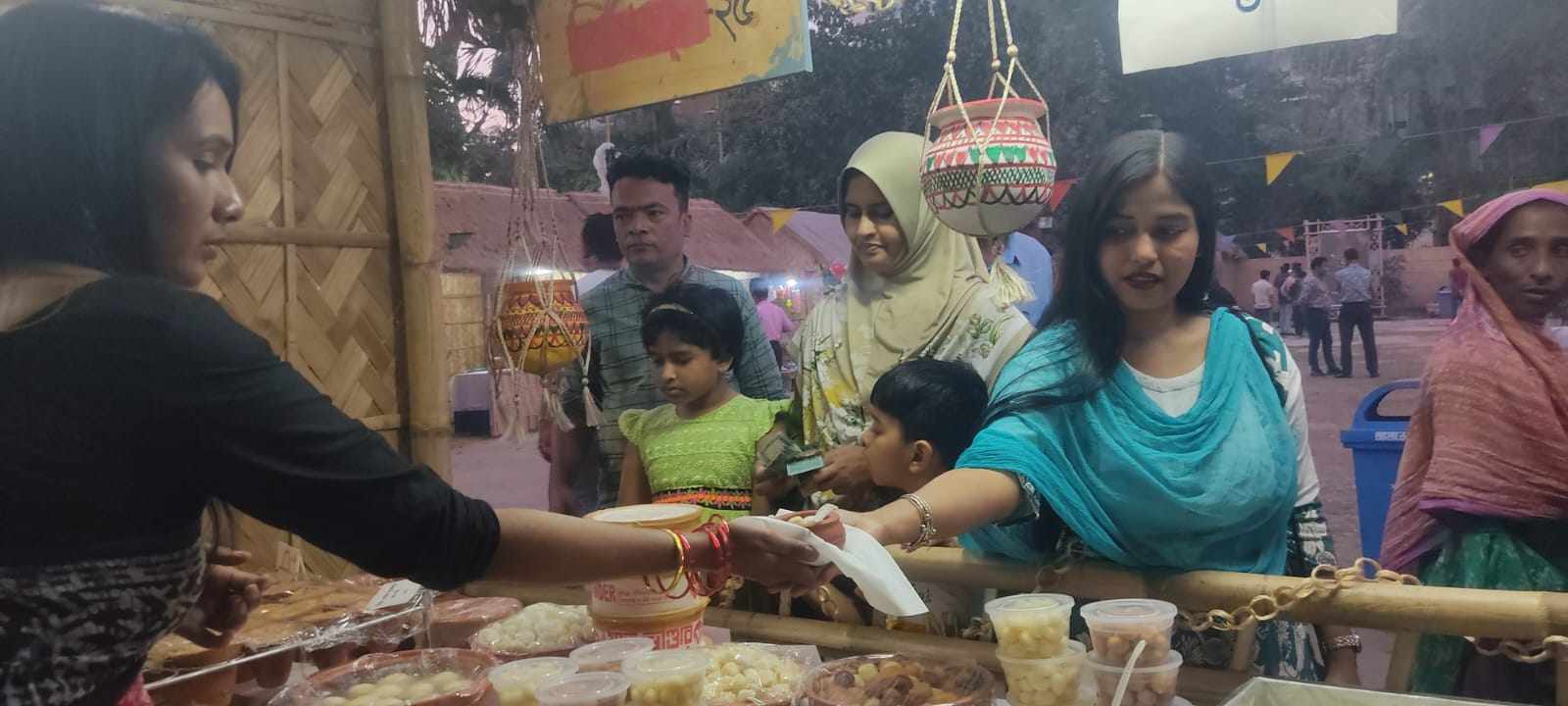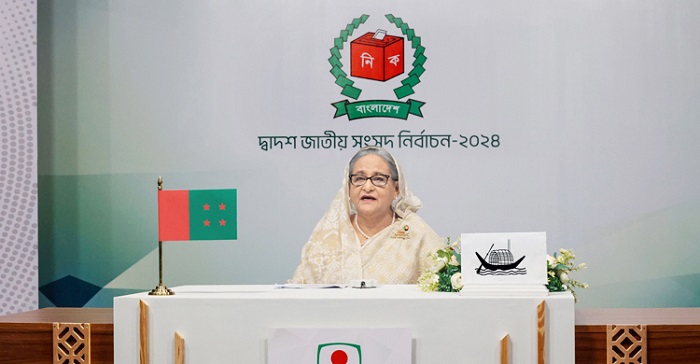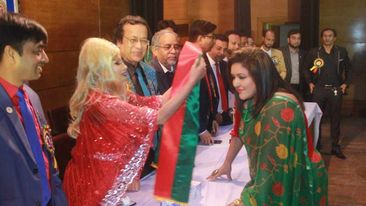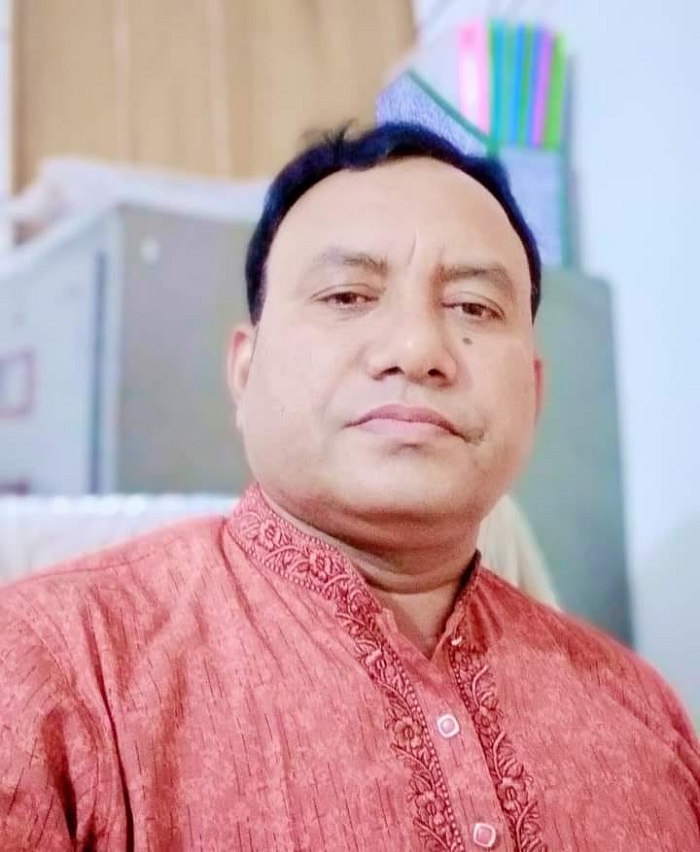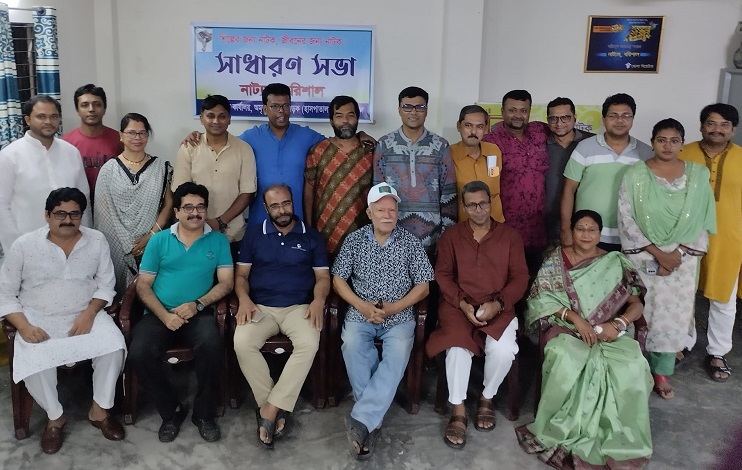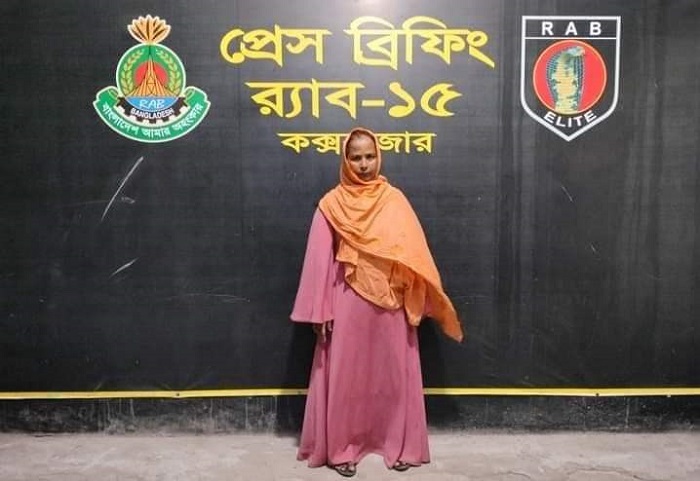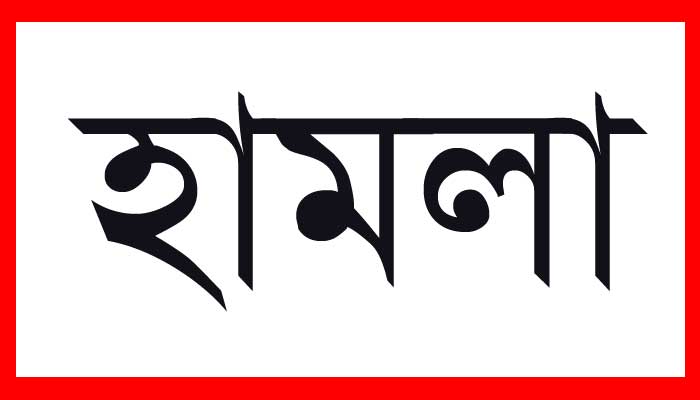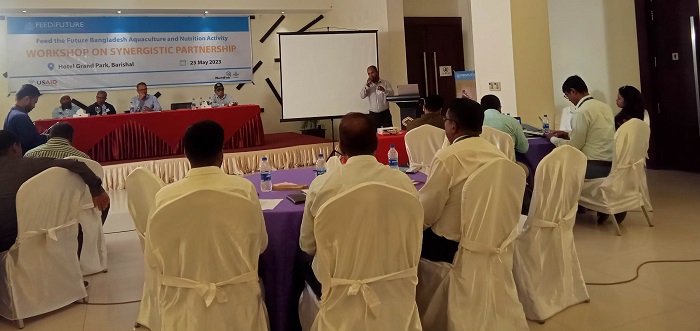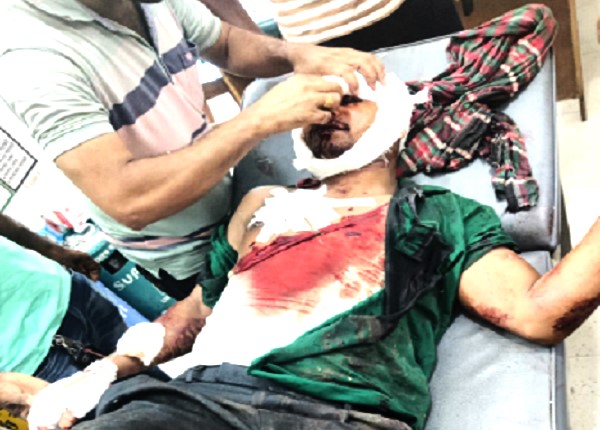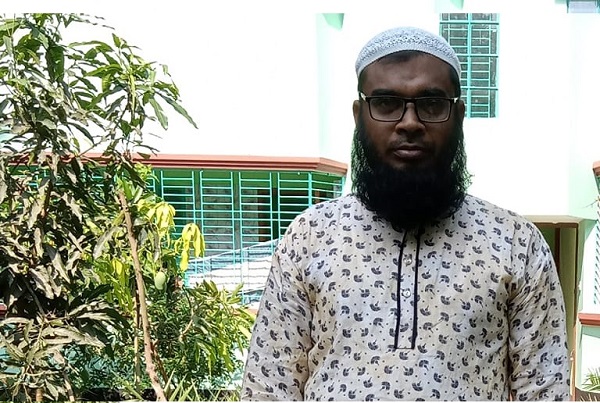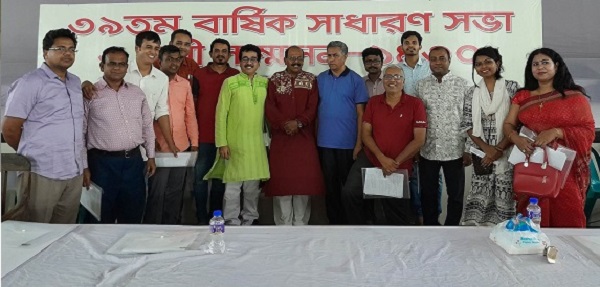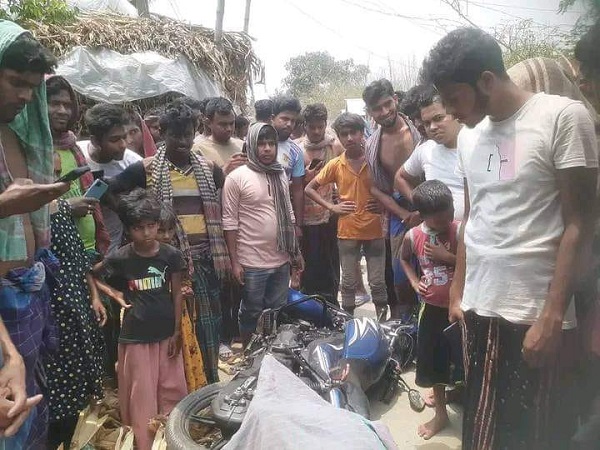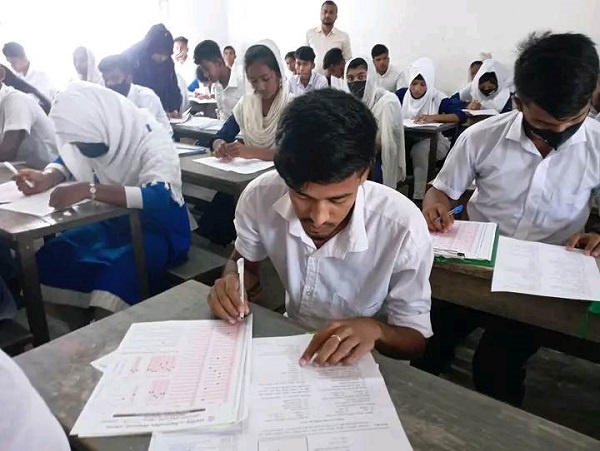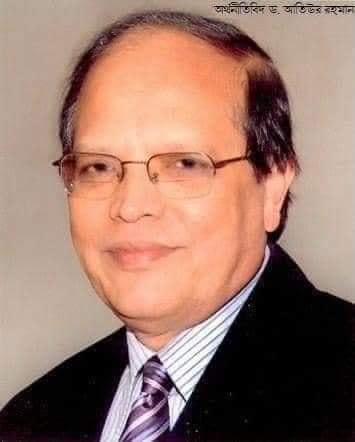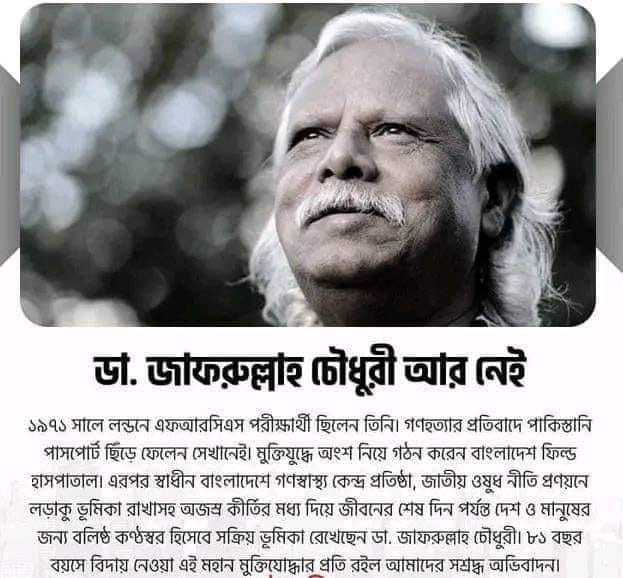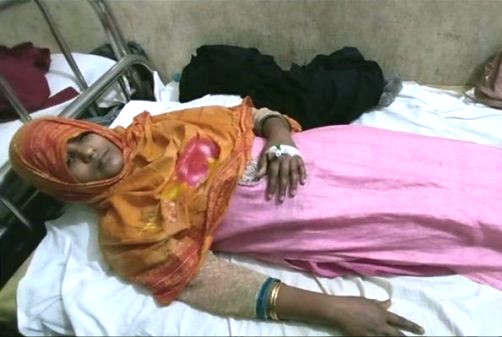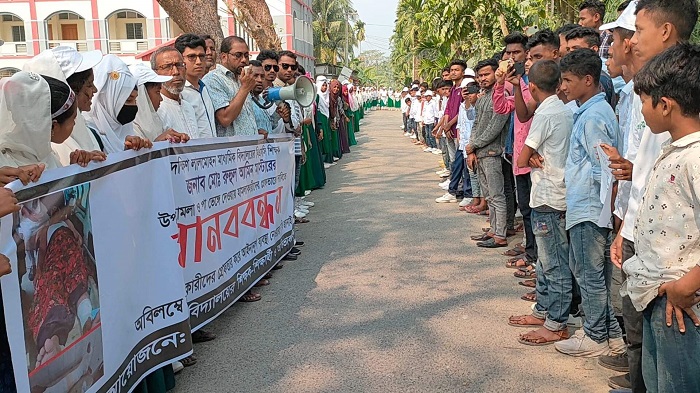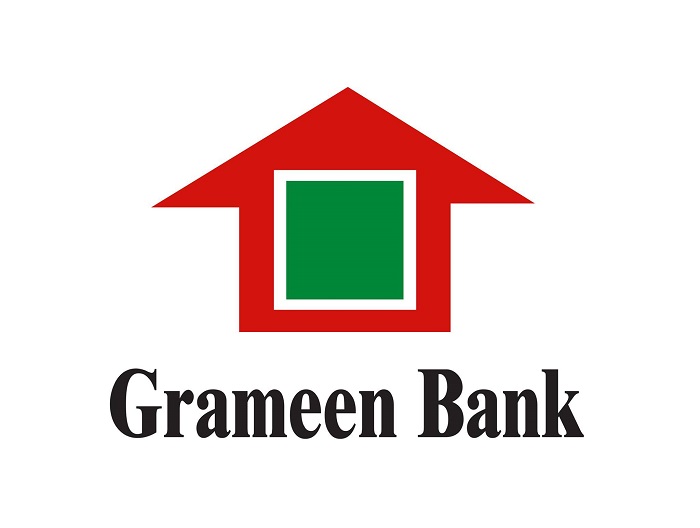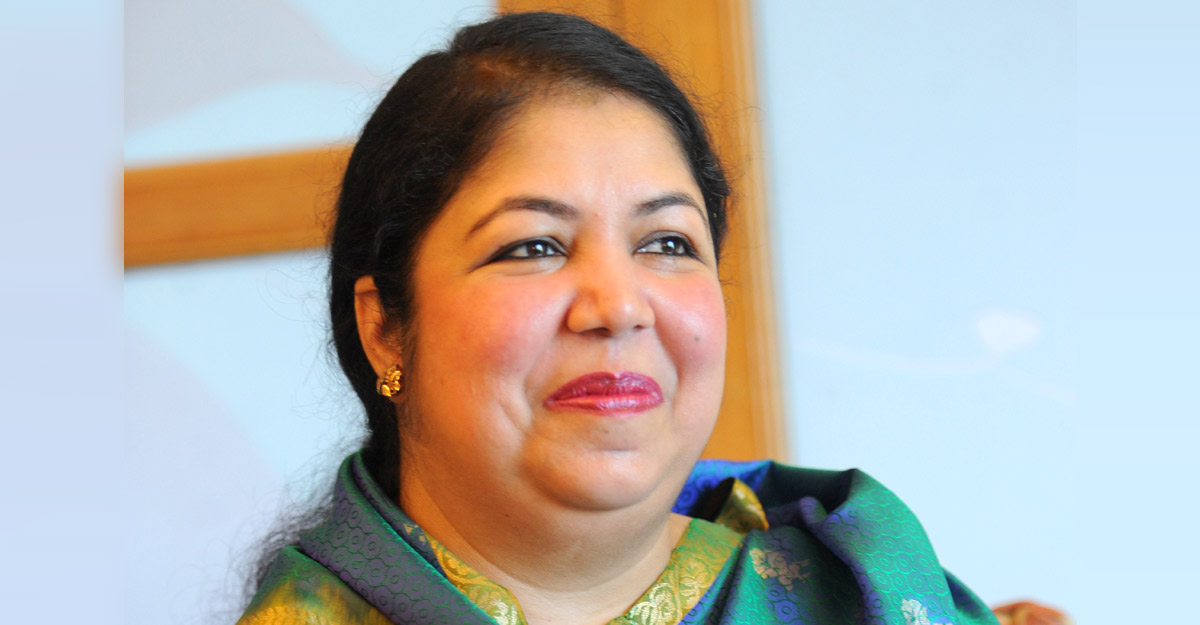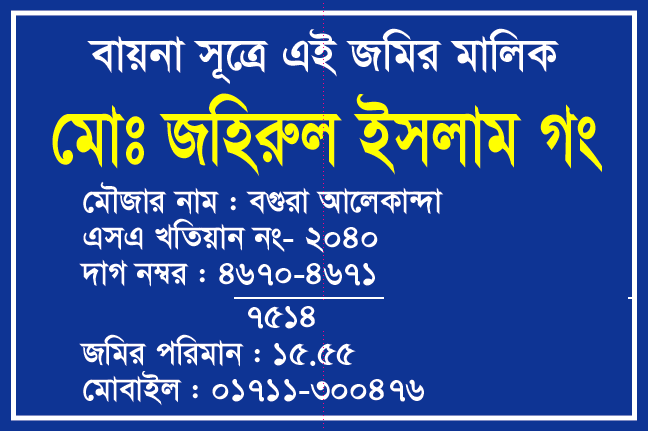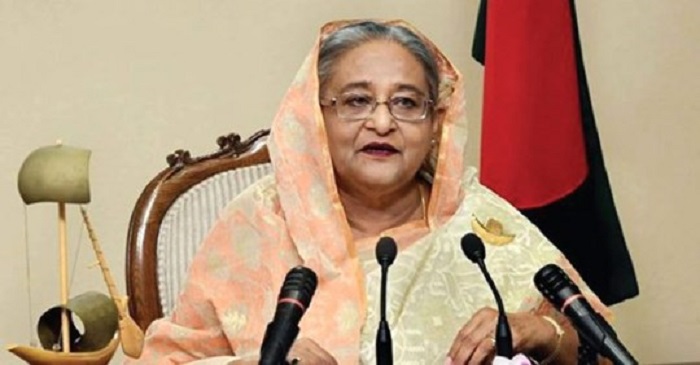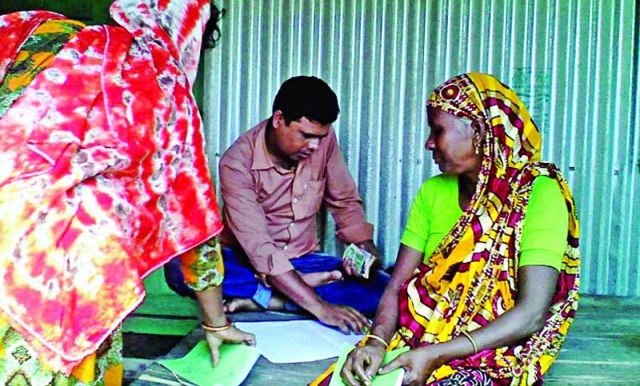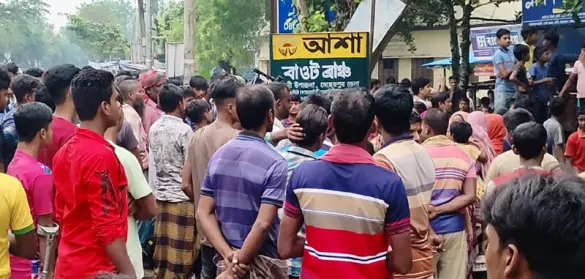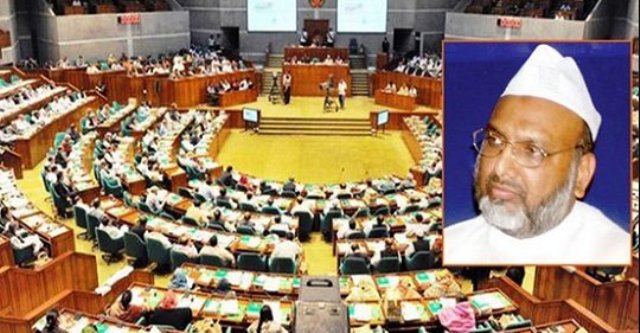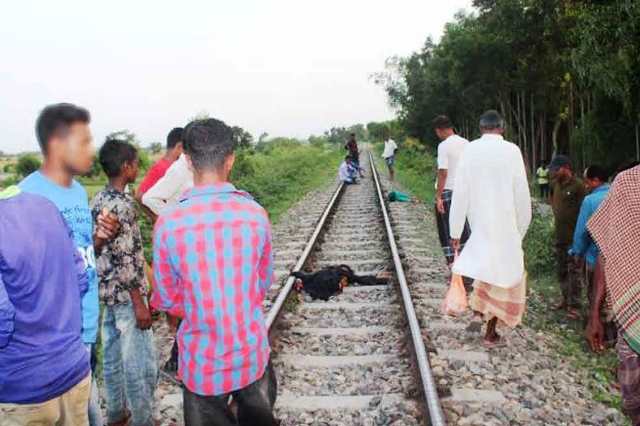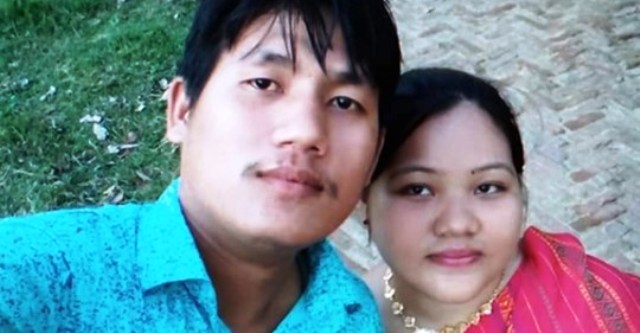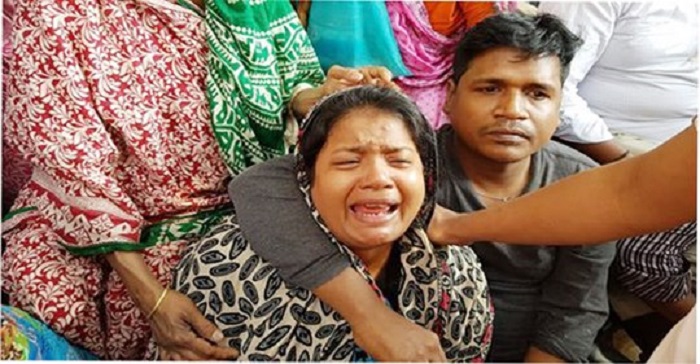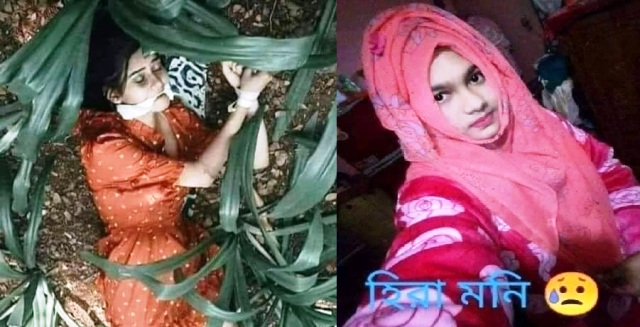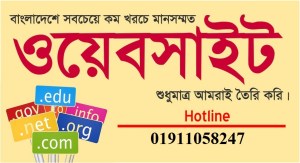Gender Mainstreaming and Gender Justice study report published : A Fisheries Study of Bangladesh.
অক্টোবর ২০ ২০২০, ১০:০০

AJKEEJHOLOK
Basic Characteristics of Female Members of Fishers Families: The study interviewed 1200 in total; most of them fall under the age group of 25 to 34. Female members of 56-85 also took part in the data collection process. 98% of the responders are married, 1% widow, less 1% unmarried.
3.1. Major Occupation of Women Members of Fishers Families: Most of the responders (97.11%) are housewives, the second highest number is fishers (1%), they are directly involved with fish culture of capture. Other occupations are insignificant according to the data collected. This information reveals that, women members of the coastal fishers families are less involved with Income Generating Activities.
3.2 Level of Income
Most of the families have been found to be families with an average income between 20000 taka to 100000 taka. Thus, their monthly income is between BDT 1600 to BDT 8000. Only one family is with an income of 180000 annually. 11% families are extreme poor as their daily income is less than 1.97 dollar, their annual income is 13000 taka. Poor families are 67%, with an average income of 1600 to 8000 taka. Data shows that, fishers families have access to different formal and informal credits/loans. 68% have taken loan from different sources, among them 62% taken loan from NGOs, other sources are relatives and local lenders.
3.3 Family Structure
49% of the responders’ family consist of 1 to 4 members,48% has 5-8 members and 2% belongs to household members 9-10.
3.2 Types of Women Participation in coastal aquaculture and Fisheries
Study shows that, most of the women are involved with back support both in aquaculture and fisheries and thus women are lacking. Types of women participation are as follows:
| Sector | Type of Women Activities |
| Processing | Scaling for fish grading, sorting fish, de-heading |
| Harvesting | Preparing cage, making net, collecting fish |
| Management | Weeding, preparing homestead food. |
| Gher (shrimp farming center) preparation (Bagherhat) | Carrying mud, preparing dyke, providing lime, repair- ing dyke, preparing canal |
In most cases, women works are not visible and not recognized.
3.3 Education of Female Members of the Fishers Families:
Collected data shows that, female members of the coastal fishers community are clearly lagged behind compared to the usual education situation. Girls attendance rate in the primary schools in Bagerhat is 92%, Bhola 95% and Cox’s Bazar 93%. But only 60% of the female members of the fishers family have completed class five. Only 26% responders were found to attend in different classes from class six to ten. Only 10 responders out of 1200 were found going to college after completing the SSC.
On the other hand, overall participation of girls in education in the selected districts, indicators show a comfortable situation. In many indicator girls are ahead of boys. Some indicators show that, girls from the coastal fishers families are lagged behind girls/female members of other communities.
3.4 Involvement with Income/IGAs:
It is expected that, the major source of income of the families interviewed would be fishing, the data also supports that. The main source of income is fishing for almost 99% of the families is fishing. Female members, though most of them are not fulltime fishers, about 70% female members are involved with different activities that support the fishers. For example, 54% responders are involved with drying fish, 11% are involved with net making. Observations reveal that, less involvement of women in IGAs or any income generation, less financial self-reliance in many cases creates hindrances towards the empowerment of the women in Bangladesh societies. It is also evident in the reality of the coastal women of the fisher communities. The study finds less participation of women in decision making process at both the family and society level. Data and information will be presented in following paragraphs.
The study tries to identify the reason behind the less involvement of the women with IGAs along with male outside then home. 55% of the responders involved with IGAs at home still believe that, working along with male is ‘bad’, though about 30% feel okay with that. About 15% responders have experienced of verbal harassment by their makecounterpart.
All the responders involved with IGAs outside their home are suffering from discrimination regarding wages. 100% responders are getting less daily wage compared to their male counterpart. It is interesting to see that; 21% responders accept less wages as a usual practice and rationale as they are women. 39% respondersexperience a common understanding among male employer that, women labour are cheaper and 40% responders are getting such excuses form employer that, they can work less compared to their male counterpart.
Female members of the fishers community are not properly trained on IGAs. Only 34% of responders are trained on one or two IGAs.
3.5 Involvement with Decision Making Process
Almost half of the responders (53%) believe that, they are involved in the decision-makingprocess ‘partially’ taking partial and 42% believes that, they are regularly taking part in the family level decision making process (5% don’t participate). But some other data shows a bit different scenario. Though half of the responders believe that, they are participating in the decision-making process partially, when we examine their level of participation in three important issue of family level decision making process, their participation was found low. For example, about 31% of the responds don’t take part in taking decision on the assets of the family, especially in buying or selling. During decision of marriage of any of the family members, 42% responders take part and about 58% responders don’t have any say in making decision regarding family expenditures. In marginalized coastal society, which is in fact patriarchic in nature, participation of women in decision making process is still far from the desired level. Data and information also support that situation. If we go through the chart, we will see that, `NO’ is higher against all three important indicators of decision-makingprocess at the family level.
Data reveals very low level of participation of women in different social structures. About 82% responders don’t participate in local `Salish’ or village courts, no one is a member of local institutions like market, schools etc. Though more than 80% (82.34%) know the Union Parishad, but only 2% have so far communicated directly with Union parishad chairman about services and others. 83% of responders were ever asked opinion or anything like this form local service providers to decide about any development project, only about 12% responders can remember such incident with them.
Most of the responders (65%) can go out of the home of their will, but there are some sorts of restrictions. Almost 98% responders visit their neighbors anytime as their will, but 42% of them can go to their relatives house as they will, but that house should not be so far.35% of the responders even claimed that, they could not get medical treatment when they feel it is needed.
3.6Violence Against Women
Female members are facing different problems and challenges both at home and outside. 62% responders are victim of different sorts of violence against women. Most of them, about 74% feel insecure when the male head of the families are at the sea or fishing. 76% of Female victim so far lodged complaint to neighbor or social leaders about harassment, but only 13% of the complaint have been able to get satisfactory solutions. Families with girls feel most insecure while their male head are out of home.
3.7 Peer communication, Networking
Idea about networking among the responders is almost zero, they don’t have any idea about networking. No female clubs, or organizations are available among them. Many of the female members (50.12%) are involved with Micro Finance groups, but other than that, responders don’t have any institution for their own.
3.8 Knowledge about laws and Rights
No responders were aware about fisheries related laws and regulations. Only 73% responders believe that, there are laws specially to protect them, 23% responders don’t believe even there are any laws that can protect them from their sufferings. So far, no responders have ever taken any legal action in favour of them. Source
Part Three: Recommendations for Policy Advocacy
Gender disaggregated data
There is an urgent need for gender-disaggregated data in the fisheries sector as a whole, but especially in the aquaculture sub- sector in Bangladesh as there is high degree of involvement of women in it and gross underreporting.
Quantitative and qualitative data is vital for informed, effective and targeted policy making and planning of project activities that promote gender equality and improve economic development and sustainable practices in the aquaculture sector. To assist the research and for planning purposes, development organizations must be encouraged to produce gender dis- aggregated statistics. For aquaculture projects undertaking gender analysis prior, during, and after project implementation is very important to understand the continuously evolving nature of gender relations, and the work and empowerment of women as this changes over time and local context. Agencies should support research targeting nuanced analysis of gendered impacts of climate change, value chain and markets, industrialization and technological changes (Weeratunge, 2010)
– friendly technology, extension, inputs, and skills-building in the areas of sustainable aquaculture.
Special Attention on the Discriminationa against women:
Laws and rules for decent work conditions and minimum pay specific to the fish- and shrimp-processing industry should be set up with the participation of stakeholders from the government, private sector, and women and men workers’ organisations; and an effective regulatory mechanism enforced to see that this is adhered to. Development cooperation needs to highlight that exploitative practices against poor women and children threaten not only the credibility of policy-makers, but also jeopardise the sustainable livelihoods of fishers’ families and the economic success of the sector.
More women involvement of women in aquaculture and fisheries: Direct participation of women in aquaculture and fisheries should be increased
Livelihood option/IGA for women: Financial self-reliance can be an essential tool of women empowerment
Participation of women in local institutions: Participation of local
- Recommendation for Sustainable Ocean
- Highest priority should be given to sustainable fisheries resource management considering the importance of this resource for sustaining livelihood of millions of poor people,
- Sustainable yield/total allowable catch (quota) must be determined by thorough assessments on a regular basis.
- No industrial practices should be allowed on the continental shelf and onshore areas which may cause destruction and degradation of fish habitats and decline of fish stocks
- All hydrocarbon exploration on the shelf and coastal waters should be carried out using internationally accepted practices.
- Climate change and associated phenomena such as sea-level rise, weather and climatic shift, changing rainfall (precipitation) patterns, depression, extreme climate events (intensification of tropical cyclones), ocean acidification and hypoxia are now visible and established facts through scientific investigations
- Recommendation for Institutions and procedure development
- There should a registration book with owner’s name and number of fisher going out of sea, – Boat owners’ association shall keep the record at the two points from where the boats go to sea.
- All fishing vessels (non-mechanized and mechanized boats) must have registration, fitness certificate, fishing license and insurance coverage, radio, life buoys for the crews
- A special Marine police station is essential for coastal region.
- Specialized hospital shall be established for fishers as skin diseases is common.
- Fisher Welfare fund from BFDC to assist fishers die at sea. The fund for the trust can be collected with 1.5 taka per thousand revenue collected in existing system. The fund shall be used only to support the families of fishers for any accident and loss at sea.
- Trade unions requires assistance to be capable to negotiate and upholds rights.
- Recommendation for monitoring and enforcement
- License providing agency shall be available in the reach of locality and Trawler shall be inspected thoroughly before providing licenses
- Marine pollution requires close monitoring and artisanal fisher can be used as informants.
- Requires regular monitoring on robbery and dacoty at sea.
- All artisanal fishing boats will only be allowed to go for fishing within the 40 m depths (at distances as great as 96 km from the beach. All industrial trawler fleets must fish at depths greater than 40
- Recommendation for community
- Fishers that living under poverty level can be taken under a particular safety net programs. The Government should increase social safety allowance for the small-scale fisheries communities during ban period on fishing.
- Livelihood support program for seasonal unemployment
- Introduce alternative income generation schemes by the govt. with emphasis on protection of human rights, introduction of employment guarantee scheme, ensure safe working environment, elimination of forced labor and child labor.
- Increase social security measures and introduce insurance schemes for fisher folks and their families.
- Treatment facilities need to be introduced for the fisher folks.
- Personal Protective Equipment should be ensured for the fisher folks.
- Including the excluded fisher ID card registration
- Increase the quantity of ration
- Instalment of NGO loan to be resume during ban period
- Financial help during ban period
- Fake fisher registration to be canceled
- Reconsidering the ban period
- Monitoring and enforcing trespassing at sea during ban period, particularly Indian trawler
- Money collection at ghat by Coast guard shall be stopped
- Financial help to work in the ice factory of betel leaf
- Increase patrolling the naval ships to secure fishers from dacoty and robbery
- Destroying small current nets
- Providing alternative livelihood opportunity, livestock support
- Recommendation on legal issues
- A comprehensive law should be formulated by the government of Bangladesh in the light of The voluntary guidelines for Small-scale fisheries and other international instruments such as 1995’s FAO Code of Conduct for Responsible Fisheries, which, alongside the fishing provisions of the UN Convention on the Law of the Sea, Voluntary Guidelines on the Responsible Governance of Tenure of Land, Fisheries and Forestry in the Context of National Food Security, the Voluntary Guidelines to Support the Progressive Realization of the Right to Adequate Food in the Context of National Food Security, and the Principles for Responsible Investment in Agriculture and Food Systems. This law should include all national & international commitments and addressing all gaps as a whole as conventional labour law is not applicable for this sector because of its nature. All of the fisher folks around the country should be referred to and included in the law.
- The Bangladesh Labour Act, 2006 and Bangladesh Labour Rules, 2015 should be amended in light of international laws and the needs of the fisher folks groups. Currently not all workers in the fishing sector are included in the Labour Law and Rules. The actual situation of the fisher folks and context of Bangladesh should be considered in making rules and regulations for this sector.
- Fishing workers, fishermen and women, Fisherfolk, and small-scale fishers should be clearly defined in all relevant laws.
- The registration procedure for Fisherfolks should be revisited and updated by the Government. The government should also give the right to fisherfolk to take register their organizations.
- Legal procedures for formation and registration of trade unions should be made easier. All fisherfolks should have the right to form and/or be part of a trade union or workers’ organization, to strengthen their bargaining power.
- Inspection by DIFE should be increased to ensure implementation of basic labour rights and Occupational Safety & Health issues. All of the fisherfolks should be provided with Identity cards from the government authorities. Compensation to workers in the fishing industry at all levels, for workplace injury should be ensured as per the Labour law.
- A Minimum Wage Board should be formed to review and declare minimum wage for the fisheries and aquaculture sectors.
- Advocacy with the govt. needs to be undertaken for adopting necessary laws and schemes for fishermen and fishing workers to ensure access to fishery resources and land. And on priority basis, land should be allotted for them to live in the fishing resource area.
- Undertake advocacy programmes with the Government to create space for civil society, including NGOs, trade unions and other stakeholders to contribute in the implementation of the SSF Guidelines.
- Undertake advocacy program with the govt. to develop a transboundary protection mechanism to save the water, resources and livelihoods of fishing communities.
- Undertake advocacy program with the govt. to allocate adequate budget and take initiatives for developing human resources and skills as well as fulfilling basic needs of fishing communities.
- Proper measures need to be taken by the Bangladeshi government, to ensure access to savings, credit and insurance schemes, with special emphasis on ensuring the access of women to such services for well-being of the fishing communities.
- The Government of Bangladesh should take proper steps to meet SDG goal 8 on ensuring decent work in its SDG decent work agenda and this goal should include focus on the fisheries and aquaculture sectors.
- The Government of Bangladesh and other stakeholders should develop necessary programs on developing community based tourism and small-scale aquaculture with the involvement of small-scale fishing communities.





